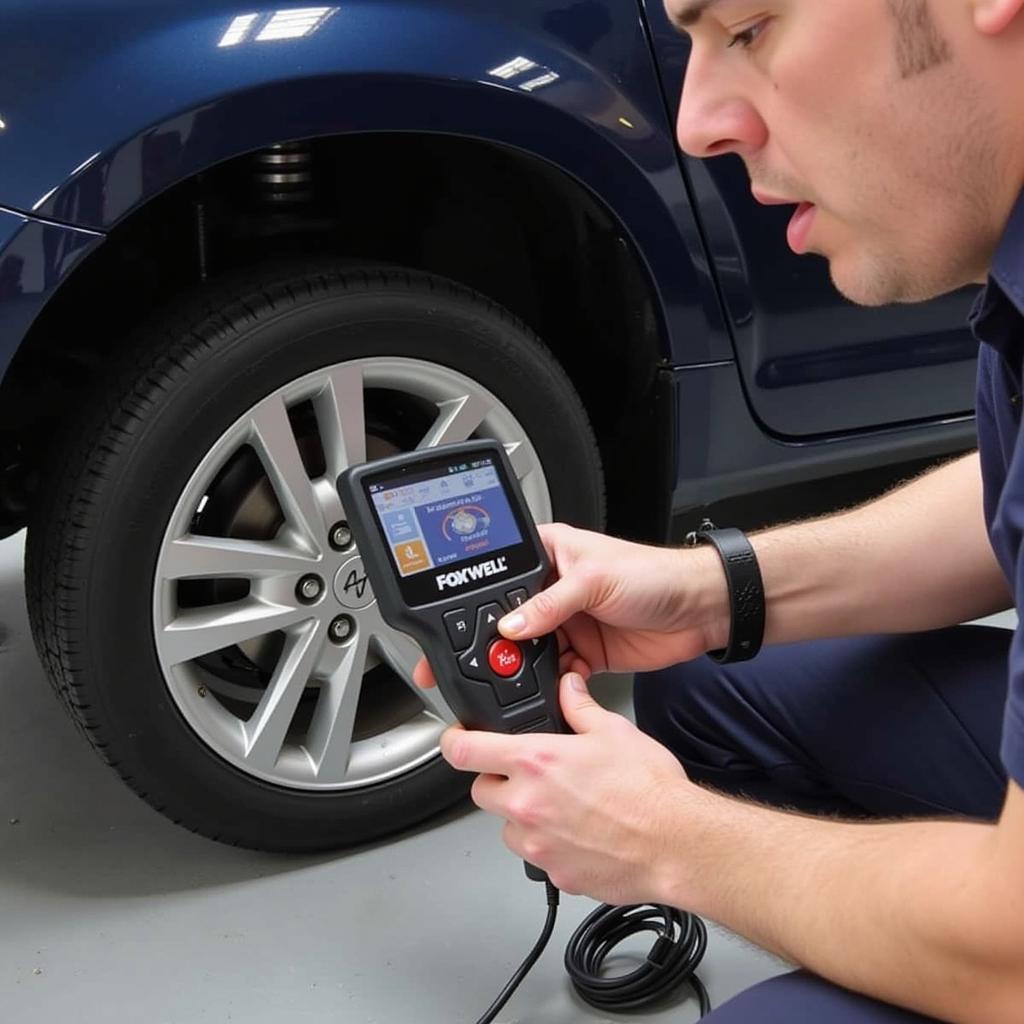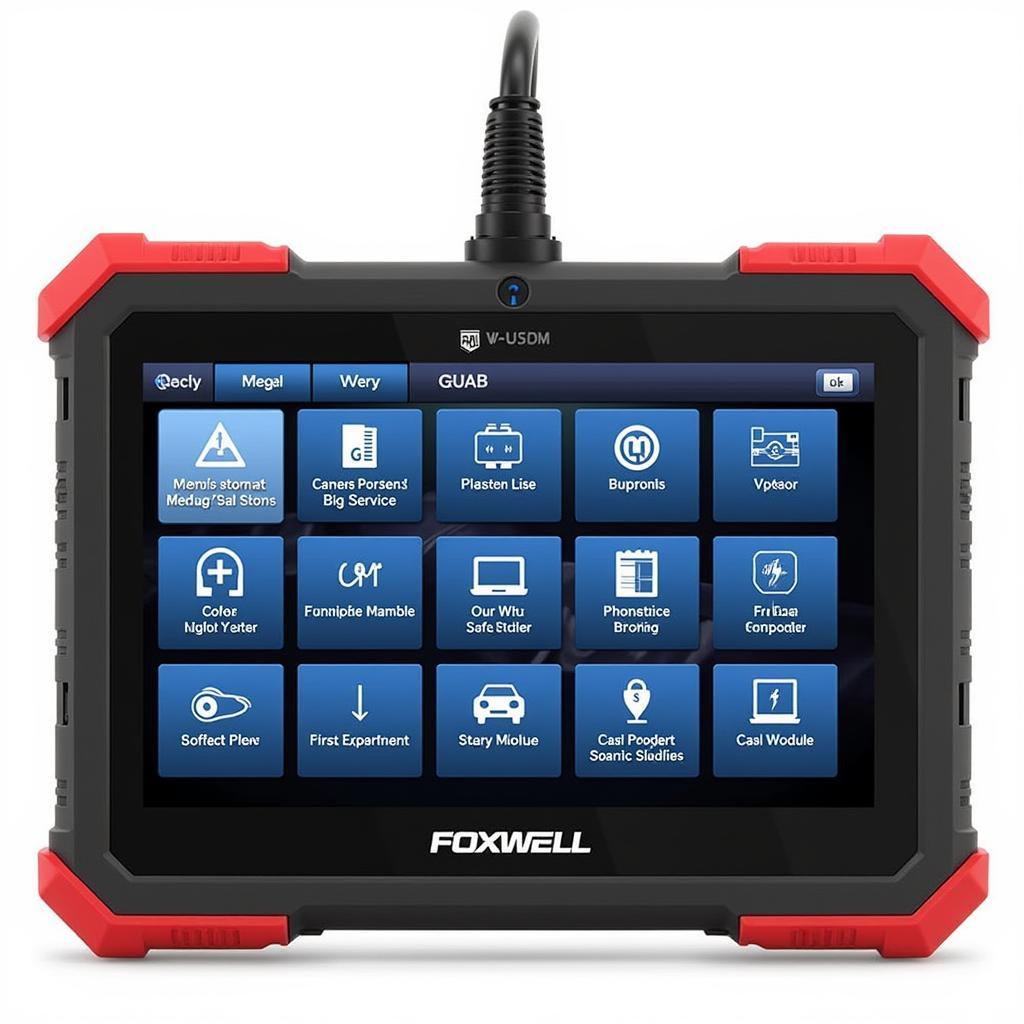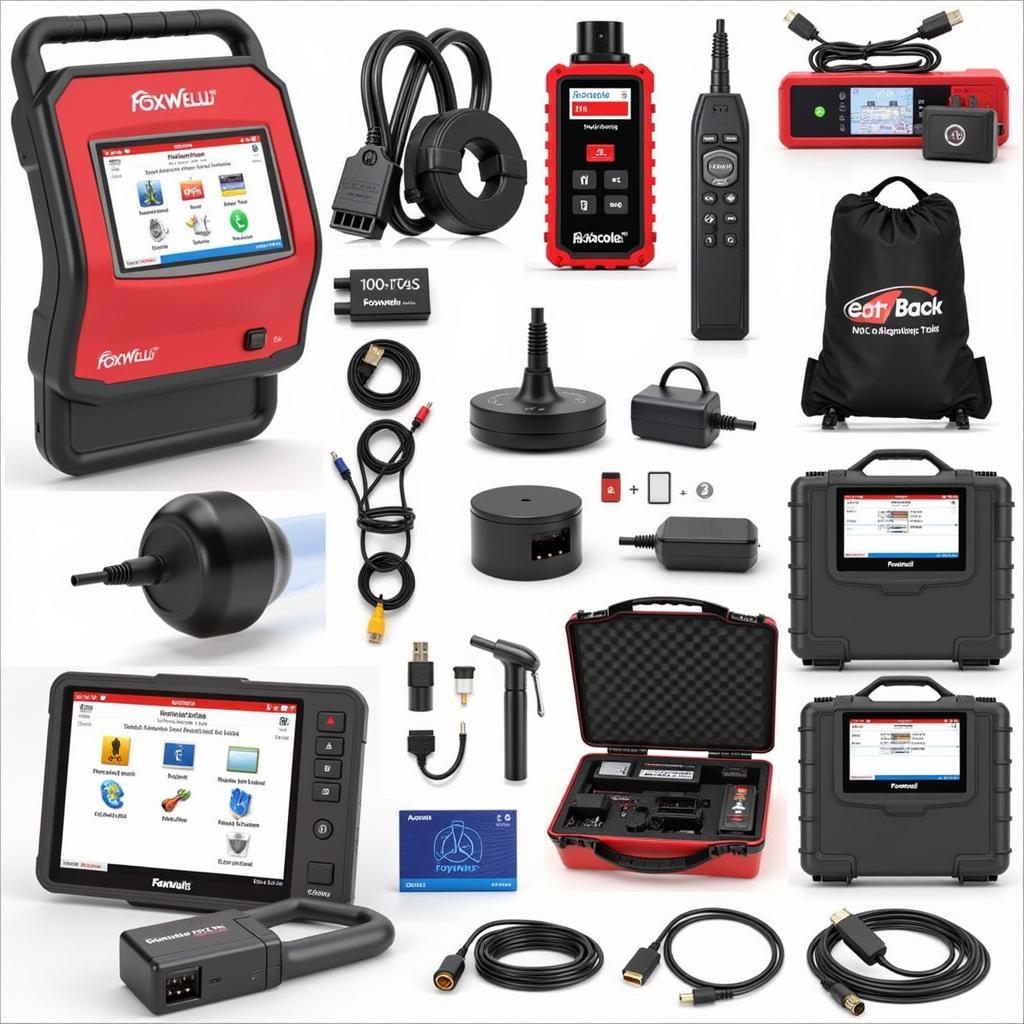The Foxwell Nt1001 Tpms has quickly become a staple for car owners and mechanics alike, offering a robust solution for diagnosing and resetting TPMS issues. This guide delves into the functionalities of this powerful tool, exploring its capabilities and offering practical insights for various automotive applications.
Understanding TPMS and Its Importance
Before we dive into the specifics of the Foxwell NT1001, it’s crucial to grasp the fundamentals of the TPMS (Tire Pressure Monitoring System). This system, now mandatory in many countries, plays a critical role in road safety by constantly monitoring the air pressure in your tires.
A TPMS comprises sensors within each tire that relay pressure readings to the vehicle’s ECU (Electronic Control Unit). Any significant pressure deviations trigger a dashboard warning light, alerting the driver to potential hazards.
Why is Maintaining Proper Tire Pressure So Crucial?
Maintaining the recommended tire pressure ensures optimal vehicle handling, fuel efficiency, and, most importantly, safety. Underinflated tires can lead to increased rolling resistance, reduced fuel economy, and an elevated risk of blowouts. Conversely, overinflated tires can result in a harsher ride, premature tire wear, and reduced traction.
Introducing the Foxwell NT1001 TPMS Tool
The Foxwell NT1001 TPMS tool emerges as a game-changer in the realm of tire pressure management. This versatile device empowers users to diagnose, program, and reset TPMS sensors with remarkable ease.
Here’s a glimpse into its key features:
- Wide Vehicle Coverage: The NT1001 boasts an impressive database, supporting a vast range of American, European, and Asian vehicle makes and models.
- User-Friendly Interface: Navigating the tool’s intuitive menus and functions is a breeze, even for those new to TPMS diagnostics.
- Fast and Efficient: The NT1001 facilitates rapid sensor activation, programming, and ECU reset, saving you valuable time.
- Comprehensive TPMS Functions: From reading and clearing DTCs (Diagnostic Trouble Codes) to relearning procedures and sensor cloning, this tool covers it all.
How the Foxwell NT1001 TPMS Tool Simplifies Your Life
This tool isn’t just for professional mechanics; its user-friendly design makes it ideal for car enthusiasts and everyday drivers as well. Here’s how the Foxwell NT1001 TPMS tool can simplify your life:
- DIY TPMS Troubleshooting: Diagnose TPMS warning lights and identify faulty sensors without needing a trip to the mechanic.
- Seamless Sensor Replacement: Easily program new sensors when replacing tires or TPMS components.
- Seasonal Tire Swaps: Effortlessly relearn TPMS sensors after switching between summer and winter tires.
- Enhanced Safety and Peace of Mind: Ensure your tires are always at the optimal pressure for safe and efficient driving.
Common TPMS Issues and How the Foxwell NT1001 Helps
TPMS problems can arise from various factors. The Foxwell NT1001 aids in identifying and resolving these issues efficiently.
1. Dead TPMS Sensor Battery
Problem: The most common TPMS culprit is a dead sensor battery. Over time, these batteries deplete, leading to inaccurate readings or complete signal loss.
Solution: The NT1001 helps determine if a sensor is truly faulty or simply needs a battery replacement. It can also be used to program a new sensor once installed.
2. Faulty TPMS Sensor
Problem: Physical damage, corrosion, or manufacturing defects can render a TPMS sensor inoperable.
Solution: The NT1001 can pinpoint the problematic sensor, allowing for targeted replacement.
3. TPMS Relearn Required
Problem: After a tire rotation, sensor replacement, or ECU reset, the TPMS system needs to relearn the sensor IDs.
Solution: The NT1001 simplifies this process, guiding you through the relearn procedure specific to your vehicle make and model.
 Foxwell NT1001 being used to program a new sensor
Foxwell NT1001 being used to program a new sensor
Step-by-Step Guide: Using the Foxwell NT1001 TPMS Tool
Operating the Foxwell NT1001 is incredibly intuitive. Follow these general steps to get started:
-
Power Up and Connect: Turn on the NT1001 and connect it to your vehicle’s OBD-II port (usually located under the dashboard).
-
Select Vehicle: Input your vehicle’s make, model, and year.
-
Choose TPMS Function: Select the desired function, such as “Read Codes,” “Program Sensors,” or “TPMS Relearn.”
-
Follow On-Screen Instructions: The tool provides clear, step-by-step instructions for each selected function.
Expert Insights
“As a seasoned mechanic, I’ve witnessed firsthand the transformative impact of the Foxwell NT1001 on TPMS diagnostics and repair,” shares Michael Carter, a certified automotive technician with over 20 years of experience. “Its user-friendly interface, coupled with comprehensive functionality, makes it an indispensable tool for professionals and DIYers alike.”
Conclusion: Take Control of Your TPMS with Foxwell NT1001
The Foxwell NT1001 TPMS tool empowers car owners and mechanics to confidently address TPMS issues, ensuring optimal tire pressure for safety and performance. Its ease of use, combined with powerful features, makes it an essential investment for anyone seeking to simplify tire pressure management.
Need assistance with your Foxwell NT1001 or have specific TPMS questions? Connect with the experts at ScanToolUS for personalized support. Contact us at +1 (641) 206-8880 or visit our office located at 1615 S Laramie Ave, Cicero, IL 60804, USA. We’re here to help!
Frequently Asked Questions
1. Is the Foxwell NT1001 compatible with my vehicle?
The NT1001 boasts extensive vehicle coverage. Visit the ScanToolUS website or refer to the tool’s documentation for a comprehensive compatibility list.
2. Can I use the Foxwell NT1001 to program aftermarket TPMS sensors?
Yes, the NT1001 supports programming both OEM and aftermarket sensors.
3. What is TPMS relearn, and why is it necessary?
TPMS relearn is the process of introducing new sensor IDs to the vehicle’s ECU. This procedure is required after tire rotations, sensor replacements, or any work that disrupts the TPMS system.
4. How often should I check my tire pressure?
It’s recommended to check your tire pressure at least once a month and before long road trips.
5. Can the Foxwell NT1001 help diagnose other car problems?
While primarily designed for TPMS, the NT1001 may offer basic OBD-II diagnostic functions, such as reading and clearing engine codes. However, its primary strength lies in its comprehensive TPMS capabilities.


